More than just expressions of faith, Pernambuco’s churches have been preserving traces of our history and culture since the 16th century.
The oldest religious buildings in Pernambuco date back to the 16th century. They were built between 1526 and 1580.
The first Brazilian church, located on the island of Itamaracá, is the Church of Our Lady of the Conception of Vila Velha, whose historical documents show that it already existed in 1526 and was used for celebrations.
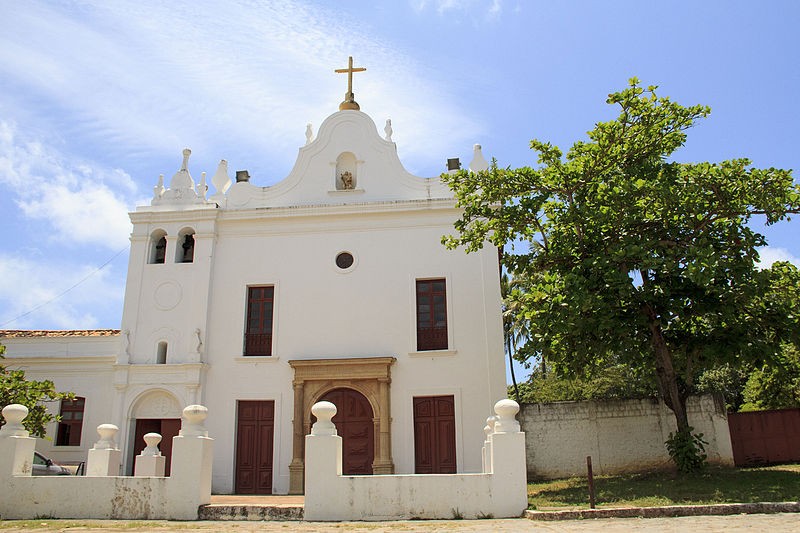
It is recorded that the second oldest church in the country, the Church of Our Lady of Light, was built in the town in 1540. It was originally built as a chapel, and although it has undergone several renovations over the years, it still retains 16th century architectural elements that enchant observers and tourists.
The oldest churches in Pernambuco
1. Church of Our Lady of the Conception of Vila Velha on Itamaracá Island
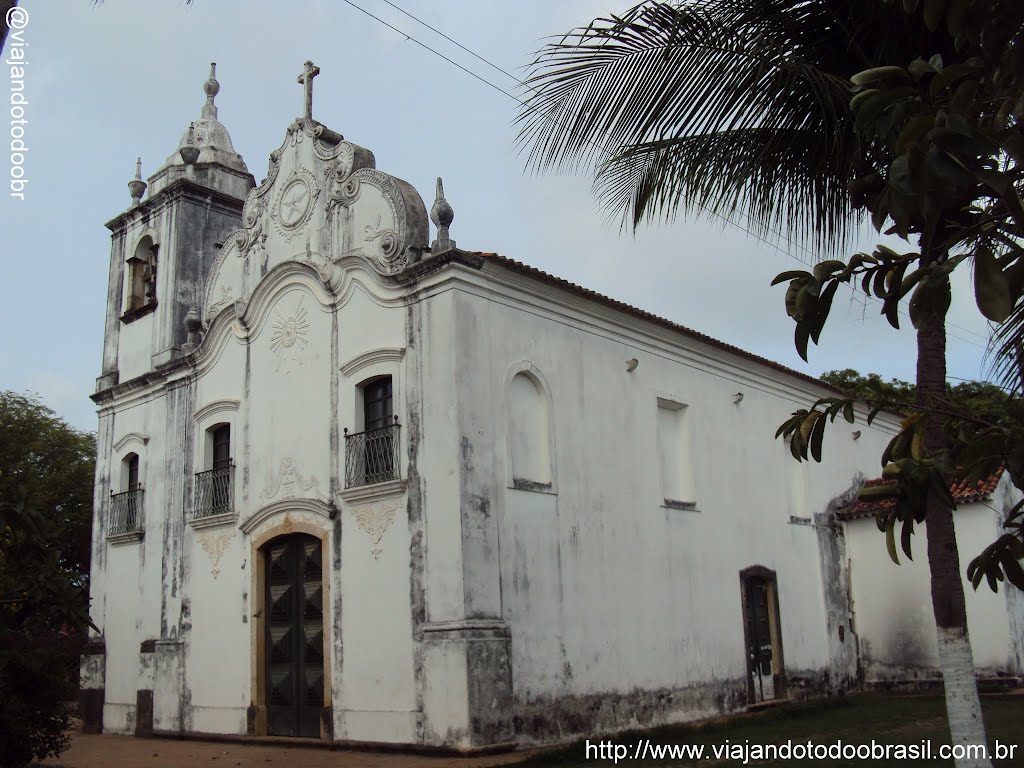
The list includes the first Brazilian church located on the island of Itamaracá: the Church of Our Lady of the Conception of Vila Velha, whose historical documents indicate that it already existed and was celebrated in 1526.
The place where the church stands is the site of a fortress built in 1534 by Captain João Gonçalves. Seven years later, the town was elevated to the category of village and became the seat of the Captaincy of Itamaracá, having been nominated to house the administration of Dutch Brazil, along with the town of Olinda and the island of António Vaz.
The first appearance of the church was that of a chapel, completed in 1547 under the invocation of Nossa Senhora da Conceição, in honour of the patron saint of Portugal. It is the second oldest church in Brazil, after São Cosme e Damião in Igarassu.
Since its original construction, the building has undergone two major renovations: in 1729, the central nave was enlarged and a chapel and pulpit were built; and in the 19th century, a sacristy, a new chapel and a cemetery were added.
The front façade dates from 1889, and the sides have merlons and arrowheads, remnants of the Dutch practice of fortifying churches.
Since 1866, when it was transferred to the Church of Nossa Senhora do Pilar, on the north coast of the island, the former seat of Itamaracá has been called Vila Velha, as it is still known today.
The Church of Vila Velha was declared a National Heritage Site in 1985, when it was restored and the ruins of the Church of Nossa Senhora do Rosário dos Pretos, the Santa Casa de Misericórdia and the Casa de Câmara e Cadeia were grouped together.
2. Mother Church of São Cosme e Damião in Igarassu
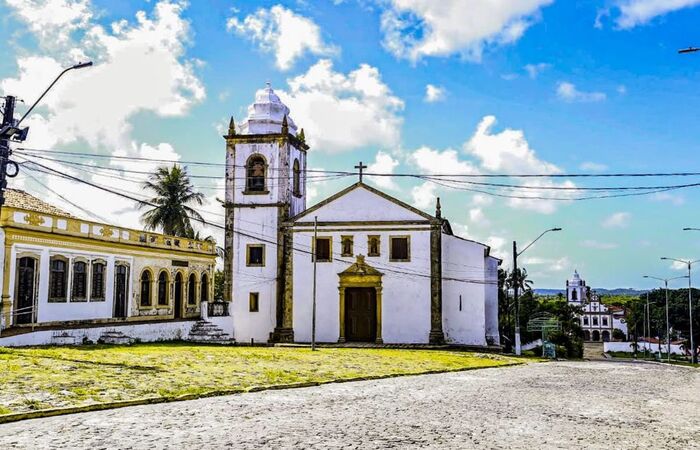
The Igreja Matriz de São Cosme e São Damião in Igarassu is the oldest functioning church in Brazil.
Its construction began in 1535 and was not completed until the 17th century. The construction of the church is attributed to the Portuguese victory in 1530 over the Potiguara Indians and the French who were there.
Saints Cosme and Damião are credited with a miracle in 1685, when the cities of Recife, Olinda, Itamaracá and Goiana were ravaged by yellow fever, but Igarassu escaped unscathed.
The church is located on the historic site of Igarassu, also known as the Marcos site.
The site of the Church of São Cosme e Damião was marked by countless battles between the Indians and the Portuguese, whose efforts to populate the region ensured the security of the northern border of the Pernambuco captaincy.
Two legends permeate the history of the church dedicated to the saints: the blinding of the Dutch when they tried to set fire to the building in the 17th century and, in the 18th century, the protection of the town of Igarassu against the plague that spread throughout the captaincy.
Built in 1535 at the behest of the donor Duarte Coelho himself, it is one of the main buildings in Frans Post’s paintings of Igarassu in the 17th century. At that time it appeared as a simple chapel with a triangular pediment and a central door, an element that has survived the renovations it has undergone over the centuries.
The current volume of the building dates from 1755, but it also has architectural and decorative elements from interventions in the 19th century.
The interior is characterised by eighteenth-century paintings depicting scenes from the Dutch wars and everyday life in the city, which make up the sacristy and choir, and by the choir arch, which is covered with carvings in the Joanine style.
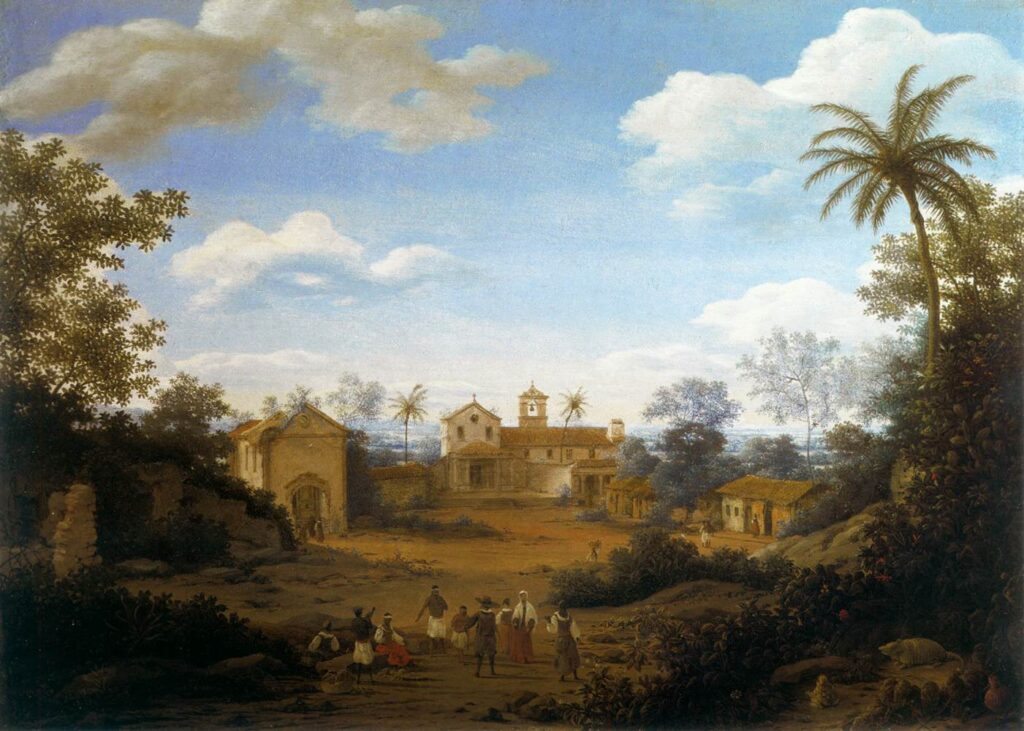
In the 1950s, its Baroque features were replaced by traces of Jesuit architecture, returning to the sober formal standards of the Mannerist style. The church, which has the title of parish church, was declared a monument by the National Institute of Historical and Artistic Heritage in 1951.
See also Igarassu, a historic town in the Metropolitan Region of Recife PE.
3. Church of St. Lawrence of Tejucupapo in the parish of Goiana
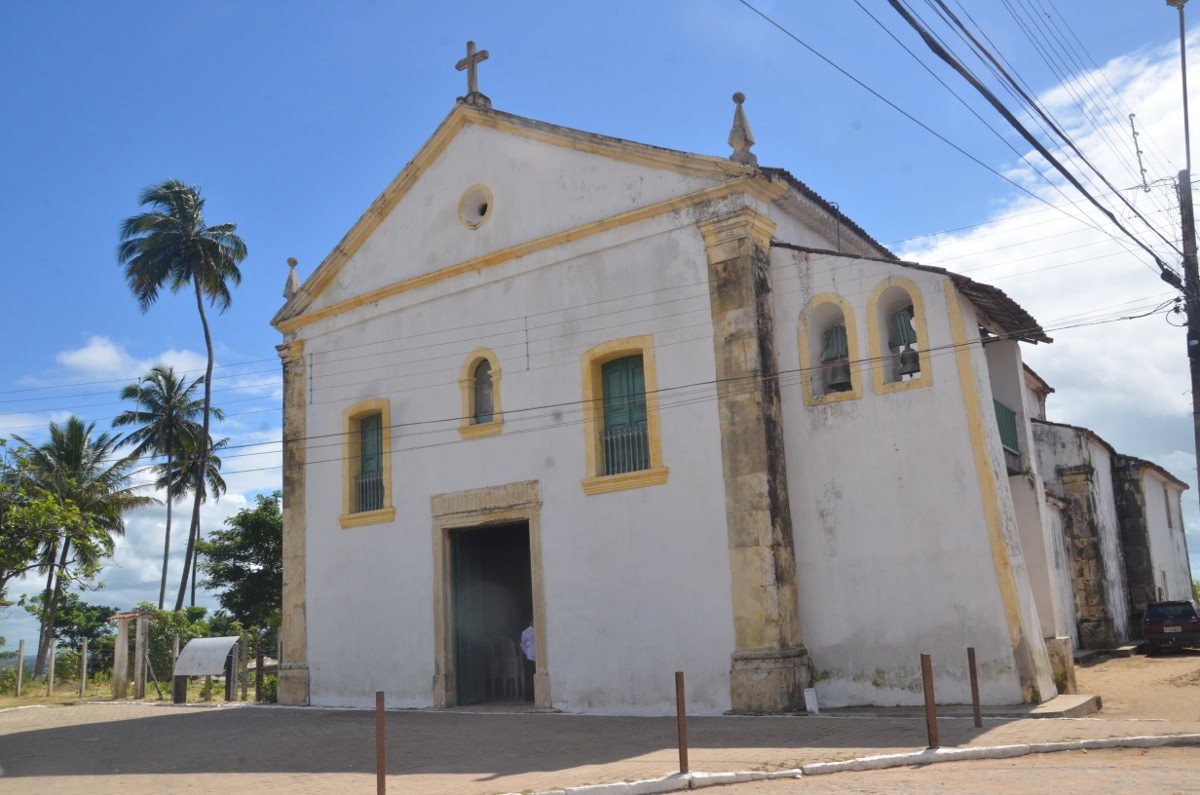
One of the richest pieces of historical evidence can be found in the small church of São Lourenço de Tejucupapo, in the municipality of Goiana, in the northern Mata region of the state. “It was here that the Jesuits coordinated the construction of the building with the help of the local natives. That’s where history comes in.
Historical research on the Church of São Lourenço is still in its infancy, partly due to the lack of primary textual sources, especially those relating to the beginning of its construction, which has made reading the expressions of the building itself an important tool in the study of its origins.
The church has formal characteristics similar to most of the first religious buildings built in Brazil, both in the composition of the façade and in the layout. The interior is rectangular, with a nave, choir, presbytery, side chapels and a two-storey sacristy.
It has a triangular pediment with an oculus in the centre and a central door giving access to the nave, flanked by two slit windows at the level of the choir. Many of its compositional elements are made of stone, such as the cornerstones, the transept and the royal cymatium.
The church has undergone a series of renovations that have modified some of its interior elements, such as the staircase to the choir and the original altars, which have been replaced and one of the pulpits removed.
Despite its apparent stylistic preservation, which shows the volume and features of Jesuit architecture, the church, one of the oldest in the current state of Pernambuco, preserves its main original features, which stand out for the simplicity and rigour of its constructive lines. It was declared a National Monument in 1994.
4. Church of the Saviour of the World (Sé), 1535 (Alto da Sé, Olinda)
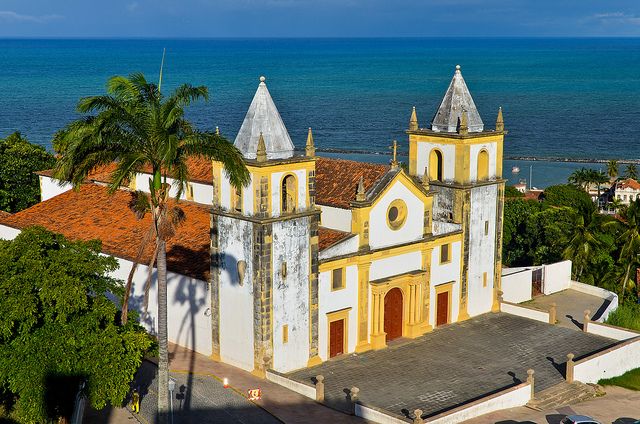
The first parish officially founded by the Catholic Church in the Northeast, it has been the cathedral of the Archdiocese of Olinda and Recife since 1676. It is one of the most important monuments in the historic centre of Olinda. It is open to visitors every day from 9 am to 5 pm.
Historical research on the Church of São Lourenço is still in its infancy, partly due to the lack of primary textual sources, especially those relating to the beginning of its construction, which has made reading the expressions of the building itself an important tool in the study of its origins.
The church has formal characteristics similar to most of the first religious buildings built in Brazil, both in the composition of the façade and in the layout.
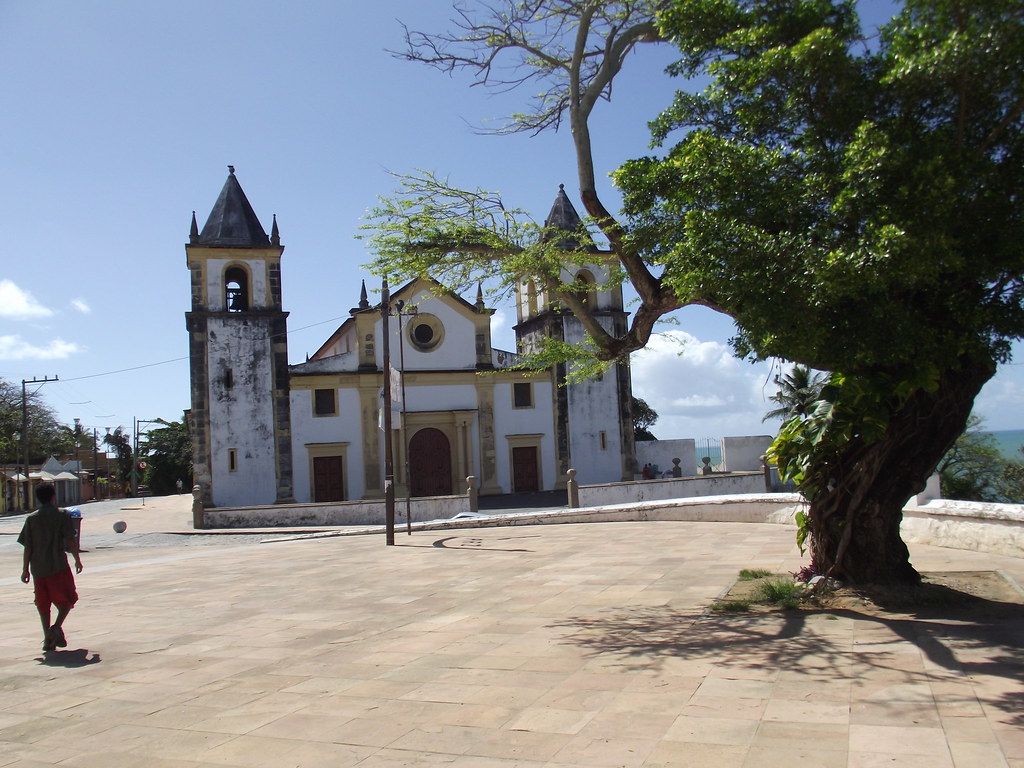
Igreja de São Salvador do Mundo em Olinda PE
The interior is rectangular, with a nave, choir, presbytery, side chapels and sacristy on two levels.
It has a triangular pediment with an oculus in the centre and a central door giving access to the nave, flanked by two slit windows at the level of the choir. Many of its compositional elements are made of stone, such as the cornerstones, the transept and the royal cymatium.
The church has undergone a series of renovations that have led to the modification of some internal elements, such as the choir staircase and the original altars, which have been replaced, and one of the pulpits, which has been removed.
Despite its apparent stylistic preservation, which shows the volume and features of Jesuit architecture, the church, one of the oldest in the current state of Pernambuco, preserves its main original features, which stand out for the simplicity and rigour of its constructive lines. It was declared a National Historical Monument in 1994.
5. Church of Our Lady of the Mountain, 1537 (Amparo, Olinda)

One of the first churches built in Olinda, it escaped a fire caused by the Dutch during their invasion because it was located on a remote hill. It is home to a Benedictine convent that produces handmade biscuits and liqueurs. Visits can include Gregorian chants and take place from 8.30am to 11am and from 3pm to 4.50pm.
The Church of Nossa Senhora do Monte, built in 1535 by order of Duarte Coelho, is the oldest religious building in Olinda. The interior is rustic, consisting only of a simple high altar that imitates a hill (made of wood) with the image of Our Lady on top.
It was the first church in Olinda dedicated to the Virgin.
It still retains its original 17th century style, with a simple but elegant façade, a low tower with small windows and a low wall around it, like a fortress.
It is believed that this church escaped the Dutch fire because it was too far from the city centre. In the 16th century it was donated to the Benedictines and became the Monastery of St Benedict. It is currently home to the Benedictine nuns’ convent.
6. Church of Our Lady of Light, 1540 Matriz da Luz (São Lourenço da Mata )
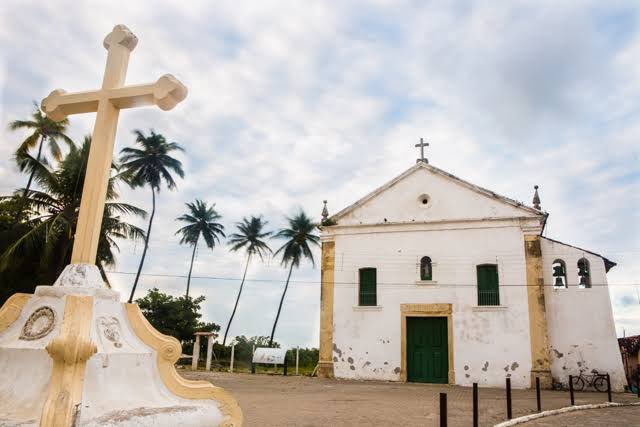
This church, which represents the second district of São Lourenço da Mata, is one of the oldest in Pernambuco and is a sign of the city’s Catholic vocation. It receives pilgrims dedicated to the saint every 2 February. A landslide in 1998 destroyed some of the historical records.
The historical heritage of São Lourenço da Mata is very rich, with mills, churches and colonial mills, such as the Igreja Matriz de São Lourenço, the Capibaribe and Tiúma mills, various sugar cane mills, the Pau-Brasil forest, the Matriz da Luz (the second oldest Catholic church in Brazil) and the Tapacurá dam.
History of the municipality
São Lourenço da Mata can be considered one of the oldest cities in Brazil.
Historical records date back to the presence of the Tupinambás Indians, who occupied land along the Capibaribe and Beberibe rivers around 1554. During the same period, the Indians fought Portuguese colonists for the land they occupied, and the Portuguese won the battle against the natives and managed to settle in the region to exploit Brazilwood.
It is recorded that the second oldest church in the country, the Church of Our Lady of Light, was built in the town in 1540. It was originally built as a chapel, and although it has undergone several renovations over the years, it still retains 16th-century architectural elements that enchant observers and tourists alike.
Later, in 1621, a chapel was built that gave way to the current parish church, dedicated to São Lourenço, the town’s patron saint.
The first occupation of São Lourenço da Mata was linked to the extraction of brazilwood. At the end of the 16th century, the first sugar cane mills appeared, and for many years this was the town’s main source of income. During the Dutch invasion of Pernambuco (1630-1654), the municipality was also the scene of disputes.
Around 1635, the Portuguese who occupied the region managed to expel the Dutch, who wanted to grow sugar cane. Until 1775, São Lourenço was only a district, subordinated to the municipalities of Recife and Paudalho.
7. Church of Our Lady of Mercy, 1540 (Alto da Sé, Olinda)
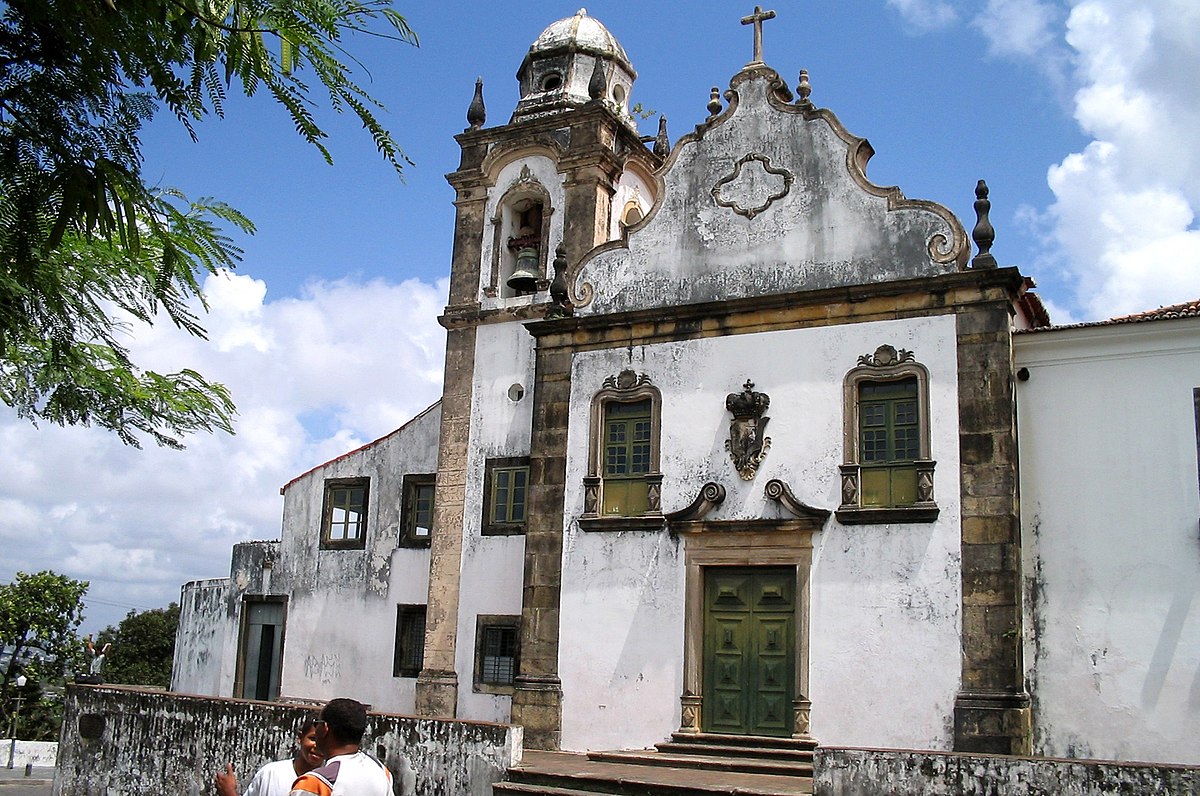
The last example from the first half of the 16th century, the church was plundered by the Dutch and burnt down in 1630. It was then rebuilt, preserving the façade but already in Baroque style. It is open to the public from Monday to Saturday. Masses are held on Sundays at 6.20am and 7.30am.
The Church of Our Lady of Light, the former Hospital of the Holy House of Mercy in Olinda, was built in 1540 by order of the Portuguese Crown. It was sacked by the Dutch in 1630 and burnt down the following year.
After the Flemish left in 1654, the church was rebuilt in the Baroque style, with echoes of the Portuguese Renaissance.
The Misericórdia church has a cemetery with retaining walls and an asymmetrical staircase. The frontispiece of the façade has two cantilevered volutes with the royal coat of arms in relief above.
The pulpit, in gilded wood carving, bears the insignia of the House of Austria. The ceiling is also carved and has painted panels, one of which, in the centre, depicts Our Lady of Mercy.
The buildings of the old hospital, next to the Church of Santa Casa da Misericórdia, were demolished to make way for a convent of Benedictine nuns.
8. Church of Our Lady of Grace, 1552 (Alto da Sé, Olinda)
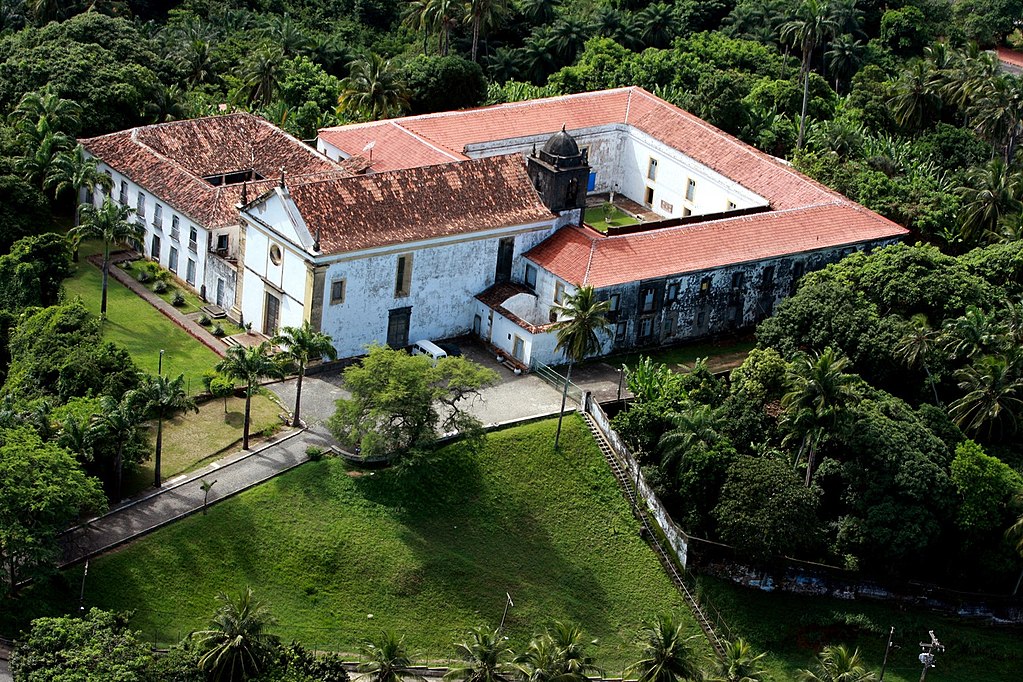
Part of a Jesuit complex that included the former Royal College of the Jesuits, the site was home to the Archdiocesan Seminary, the Faculty of Architecture, the Archdiocesan College and the School of Agronomy. It is open to visitors every day from 9.00 to 11.45 and from 14.00 to 17.00.
In 1551, the priests of St. Ignatius arrived in Olinda. They had been in Bahia the previous year.
There were two Jesuits: Manuel da Nóbrega and António Pires. They were given a chapel dedicated to Our Lady of Grace to be used by the Augustinian priests who did not come to the city. Little was done as the number of priests was small.
In 1565, the church was replaced by another, and in the 1970s it was completely rebuilt.
In 1595, when it was almost finished, it was compared to the church of São Roque de Lisboa, which was its model. The Jesuit architect Francisco Dias is credited with a project, kept in the Paris library, which may have been for such a Jesuit house.
The church is a large hall with two chapels marking a false transept and confessionals in smaller arcades in the body of the wall.
The head of the church follows the traditional form of a flat choir and two side chapels with the same layout and shape. The images of Saint Ignatius and Saint Francis Xavier, brought to Olinda in 1611, and that of Our Lady of Grace, are the first two from the 17th century and the last from the previous century.
On the side altars there are two beautiful limestone altarpieces from the end of the 16th century or the beginning of the following century.
The exterior of the church, of great sobriety and rich composition, was modelled on the churches of São Roque in Lisbon and São Paulo in Braga.
The collegiate church behind the church was built in the 16th century and shows the modifications made after 1654.
In the sacristy of the church, you can see an exquisitely crafted Portuguese wash basin with inlays. The church was completely restored between 1972 and 1978 by the Pernambuco Historical and Artistic Heritage Foundation – FUNDARPE.
9. Church of Nossa Senhora dos Prazeres, 1565 (Jaboatão dos Guararapes)

Built in honour of the battles of Monte dos Guararapes, now a historical park. It has Baroque paintings and works of art from the 17th and 18th centuries. Inside are the remains of André Vidal de Negreiros and João Fernandes Vieira. It is open to visitors from Tuesday to Saturday, from 8 to 12 and from 14 to 17.
The Oldest Churches in Pernambuco – Pernambuco Tourism and Travel Guide
Publicações Relacionadas
Golden Chapel: A Jewel of Brazilian Baroque
Explore the Enchanting Waterfalls of the Mata Sul Region PE
Pernambuco: A Guide to Its Unique Attractions
Pernambuco's best beaches and their attractions
The Stage of the Passion of Christ in New Jerusalem: A Guide
Rural Tourism Route in Pernambuco
Interior of Pernambuco: Nature, Wine, and Tradition
This post is also on:
![]() Português
Português ![]() English
English ![]() Deutsch
Deutsch ![]() Español
Español ![]() Français
Français



















